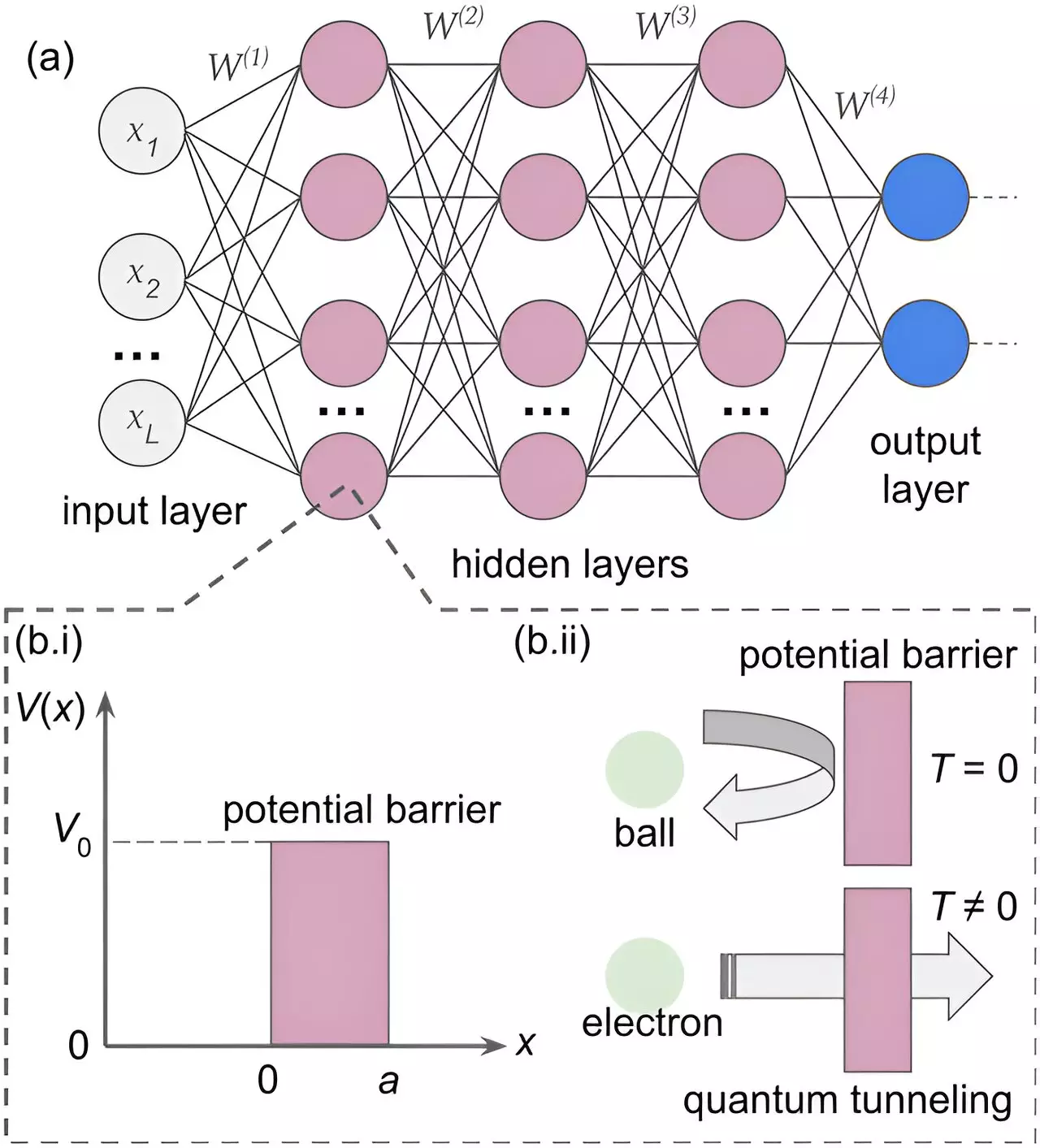The relationship between optical illusions and neural networks might not be immediately apparent, but recent research has uncovered a fascinating connection. Optical illusions have long puzzled scientists and psychologists, as they can deceive our minds into perceiving something that may not be real. These illusions offer insights into how our brains function and the limitations they may face, such as in cases of dementia or prolonged space travel. While artificial intelligence systems have made great strides in recognizing complex objects, they often struggle with optical illusions, highlighting a gap in our understanding of human perception.
In a groundbreaking study published in APL Machine Learning, a researcher harnessed the power of “quantum tunneling” to develop a neural network capable of interpreting optical illusions much like the human brain. This neural network outperformed traditional models in recognizing illusions like the Necker cube and Rubin’s vase, showcasing the potential of quantum mechanics in enhancing artificial intelligence systems. By mimicking the brain’s ability to filter and process information, neural networks can classify data as either useful or irrelevant, akin to neurons being activated by signals from their surroundings.
Quantum tunneling, a phenomenon discovered in the early 20th century, has revolutionized our understanding of natural processes and challenged classical physics. In the realm of cognitive science, researchers are exploring how quantum mechanics can shed light on human behavior and decision-making. While the debate continues on the extent of quantum effects in the brain, leveraging quantum principles can offer valuable insights into modeling human thought processes more efficiently. By integrating quantum effects into neural networks, researchers are uncovering new ways to capture the complexity of human perception, particularly in scenarios where multiple interpretations exist simultaneously.
As the field of artificial intelligence advances, there is a growing interest in leveraging quantum effects to enhance cognitive capabilities and decision-making processes. The ability of neural networks to emulate human cognition, combined with insights from quantum mechanics, opens up exciting possibilities for developing more sophisticated AI systems. By training quantum-tunneling neural networks to recognize optical illusions, researchers are not only advancing machine learning but also gaining valuable insights into how our brains process ambiguous information. In an era dominated by misinformation and deepfakes, understanding the mechanisms behind human perception is more crucial than ever.
Looking ahead, researchers are exploring how quantum effects can illuminate social dynamics and opinion formation in online networks. By harnessing the power of quantum computing in artificial intelligence, scientists hope to unravel the complexities of social behavior and potentially pave the way for conscious robots. While the journey towards quantum-powered AI and conscious machines is still ongoing, the interdisciplinary approach of merging quantum mechanics, neural networks, and optical illusions holds promise for unlocking the mysteries of human cognition and advancing the future of artificial intelligence.


Leave a Reply